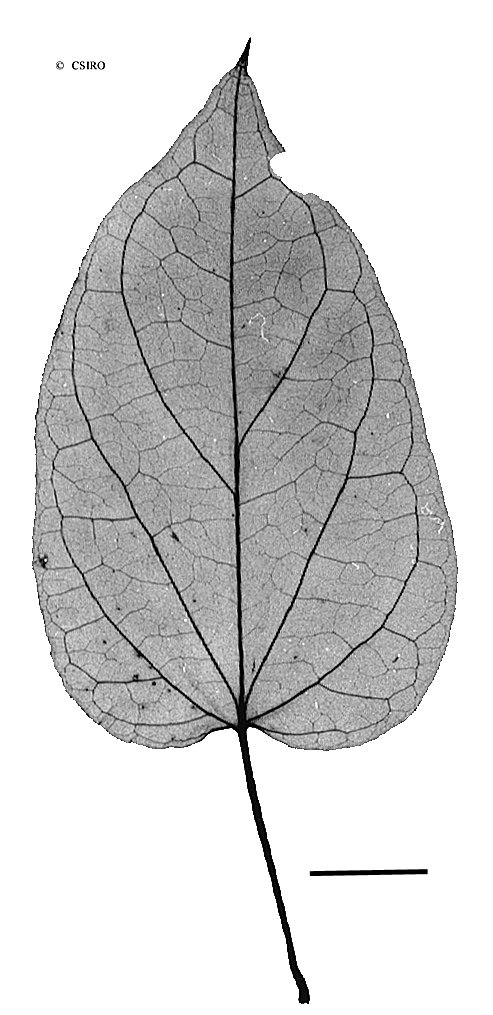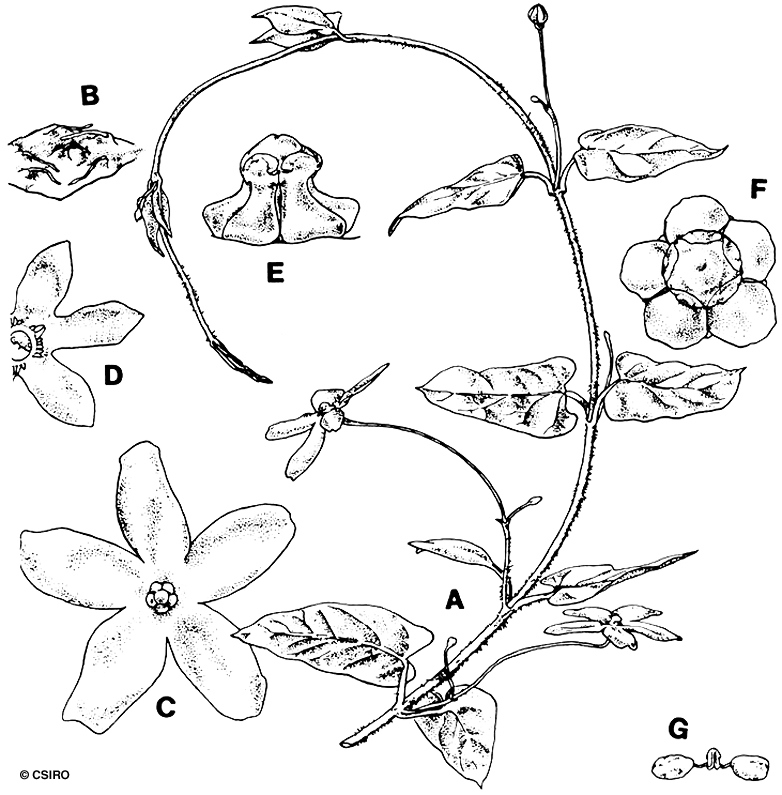Australian Tropical Rainforest Plants - Online edition
Tylophora grandiflora R.Br.




Brown, R. (1810) Prodromus Florae Novae Hollandiae : 460. Type: NSW, Hunters R., R. BRown; lecto: BM. Fide P. I. Forster, Austral. Syst. Bot. 5:44 (1992).
Small-Leaved Tylophora; Tylophora, Small-Leaved
A slender vine not exceeding a stem diameter of 2 cm.
Inflorescence a slender umbelliform raceme with only one or two flowers open at any one time. Flowers about 12-25 mm diam., pedicels slender, up to 30 mm long. Sepals glabrous, about 4-6 mm long, numerous small finger-like glands present on the inner surface between the sepals. Corolla tube about 2 mm long, lobes about 10-12 mm long, glabrous on the outer surface, inner surface clothed in short hairs. Corolline corona absent. Anthers about 0.3 mm long. Pollen aggregated in pollinia. Staminal corona thickened, spur-like. Carpels about 1.2-2 mm long. Style head (stigma) green.
Features not available.
This species has horticultural potential as it produces large numbers of red flowers.





